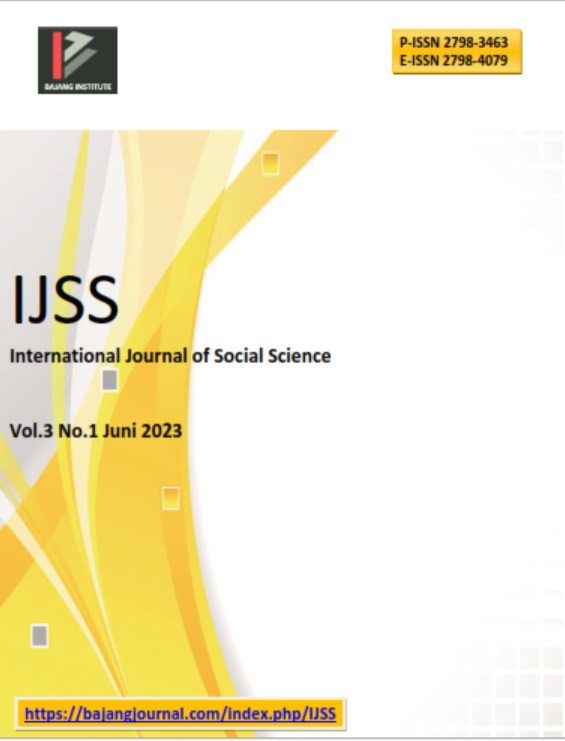FACTORS INFLUENCE THE DECISION OF RUBBER FARMERS IN TAKING KUR IN LUBUK RAJA DISTRICT OKU REGENCY
DOI:
https://doi.org/10.53625/ijss.v3i1.5717Keywords:
Decision, rubber farmer, KURAbstract
Capital is needed to procure production facilities (seeds, fertilizers, pesticides and equipment), plant maintenance costs, storage, marketing and transportation costs. In rubber farming, a lack of capital causes a lack of input, which raises the risk of failure or low productivity. KUR is MSME credit/financing in the form of working capital and investment supported by guarantee facilities for productive businesses whose distribution is through banks but the source of funds comes entirely from government bank funds with a ceiling of up to IDR 25 million per debtor. This farm credit facility is felt to have helped farmers in carrying out agricultural production activities better in order to achieve higher farmer income. This study examines the factors that influence rubber farmers in taking people's business credit (KUR) to help farmers' capital. The research was carried out deliberately in Lubuk Raja OKU District as a rubber center where many farmers took KUR for capital. The research method used is the survey method and the sampling method uses a simple random method using the slovin formula. The number of samples taken were 83 farmers from 482 farmers. Data analysis using logistic regression. The results of the analysis show that the variables of total family income (X1), land area (X2), production costs (X3) and price (X4) have a significant effect on rubber farmers' decisions in borrowing KUR funds at Bank BRI. Meanwhile, the land ownership status variable (X5) has no significant effect on rubber farmers' decisions in borrowing BRI Bank KUR funds in Lubuk Raja District, OKU Regency.
References
Juliansyah, Noor. 2016. Research Methods: Thesis, Thesis, Dissertation, and Scientific Work. First. Jakarta:
Pranamedia Group, t.t.
[Kemenko. 2020. “2020 KUR Disbursement Report.” Kur. Ekon. Retrieved at http://kur.ekon.go.id/realisasi_kur
Kusumaningrum, Septiana Indriani. 2019. "Utilization of the Agricultural Sector as a Support for Indonesia's Economic Growth." Transaction 11(1):80–89.
Sampurnaningsih, Sri Retnaning. 2021. "The Influence of Debtor Character and Customer Income on Collectability at Bmt Al-Muqrin." Journal of Civilization Balance 1(2):165–73. doi: 10.55182/jnp.v1i2.40.
Sugiyono. 2013. Quantitative, Qualitative and R&D Research Methodology. Bandung: Alphabet.
Sukino. 2013. Building Agriculture by Empowering Farmers' Communities (Breakthrough of Overcoming Poverty). Yogyakarta.
Sutojo, Siswanto. 2013. The Management of Commercial Banks. Jakarta: Raja Grafindo Persada.
TNP2K. 2021. "People's Business Credit Program (KUR)." Tnp2K.
Wirawan, Walad, Jufrizen Jufrizen, and Muis Fauzi Rambe. 2018. "The Influence of Internal and External Factors on Banking Performance at Commercial Banks Listed on the Indonesian Stock Exchange." EKONOMIKAWAN: Journal of Economics and Development Studies 18(1):19–32. doi: 10.30596/economikawan.v18i1.2150.
Wulandari, N. W. F., Anik Yuesti, and I. Made Sudiarta. 2021. “Analysis of Factors Influencing the Collectibility of Micro BRI Unit Renom People's Business Credit (Kur).” Karma Journal (Mahas Research Work
Downloads
Published
How to Cite
Issue
Section
License
Copyright (c) 2023 Fifian Permata Sari Fifian

This work is licensed under a Creative Commons Attribution 4.0 International License.

















